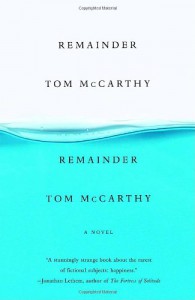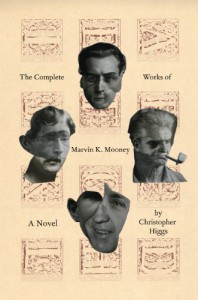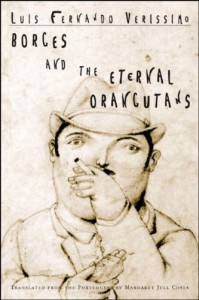
*Trigger Warning: This review contains strong themes, to include rape.*
To those that followed my reading progress, thank you. Many of the conversations we had in the comments sections of my status updates got my mind churning and were what led to the amount of research I did on the subjects I plan to cover here.
Before I begin what will likely become a very long rant/public service announcement, let me first say a few words. I have nothing against E.L. James. Nothing. She’s said that this series is a fantasy she managed to put on paper and that she never expected it to gain such momentum. Good for her for perusing her dream of writing. If this book also fulfills one of your fantasies or if you just plain enjoyed it, good for you too. This review is in no way meant to belittle or condemn you for liking these books and nor is it an attack on the author. These are solely MY OPINIONS about how dangerous FSoG is to society and specifically to women.
Needless to say, this book does not fulfill one of my fantasies. It’s pretty much my biggest nightmare.
“But it’s just fiction!”
No. You can’t use that argument with me. Not anymore. This book is not “just fiction”. This book has become a frigging phenomenon. As I write this, over 70 million copies have been sold in the United States alone, hardware stores have run out of“natural fiber” rope and there are even ‘BDSM for Beginners’ classes cropping up in small town America.
So excuse me, but I can’t just read this and think of it like a fantasy, not when it’s become a reality for so many people and not when I was so enraged by what I found within it.
*Part one of the review*
Okay everyone, take a deep breath, grab a cup of coffee or a glass of wine and settle in. We’re going to be here for a while. First up is probably the most inflammatory of the statements I’m going to make so we might as well rip the band aid off.
THIS BOOK PERPETUATES THE RAPE CULTURE WE WERE ALL RAISED IN.
There, I’ve said it. I’m not taking it back and I’m not apologizing. If you’re unfamiliar with this phrase, allow me to elaborate.Wikipedia defines rape culture as:
“A term used within women's studies and feminism, describing a culture in which rape and other sexual violence (usually against women) are common and in which prevalent attitudes, norms, practices, and media condone, normalize, excuse, or encourage sexualized violence.”
Let’s look at the first half of that definition. As much as we may want to ignore the facts, rape and sexual violence are common in America. According to RAINN, the nation’s largest anti-sexual violence organization, someone in the U.S. is sexually assaulted every 2 minutes. On average that’s about 207,754 sexual assaults each year. 54% of sexual assaults are not reported, 97% of rapists will never spend a day in jail and 2/3 of these assaults are committed by someone known to the victim.
I could go on for days about how prevalent attitudes, practices and the media condone sexual violence but I won’t because I’m really going to try and keep my words and links relevant to FSoG. Thankfully, throughout my research, I found several…hundred.
The University of California has an interesting article about how social and cultural norms perpetuate rape and rape culture. In it, they specifically address how women are conditioned from early ages to be passive and accept and affect certain attitudes and behaviors. Here are some of the social rules they list and elaborate on:
1. When spoken to, a woman must acknowledge the other person with a gracious smile.
2. Women must answer questions asked of them.
3. Women must not bother other people or make a scene because they are uncomfortable.
4. When in trouble, it is best to defer to the protection and judgment of men.
5. Casual touching or suggestive comments in social settings are meant as a tribute to a woman’s desirability.
6. It is the natural state of affairs for men to carry the financial burden of social situations.
7. When engaged in a social encounter, it is not proper for a woman to superior in any game, sport or discussion if she wants to be accepted.
8. Women should always accept and trust the kindness of strangers if they offer help.
There’s a blog post by Harriet Jacobs that also speaks to this and I urge you to read it in its entirety. In short, it says “…women are raised being told by parents, teachers, media, peers, and all surrounding social strata that:
· it is not okay to set solid and distinct boundaries and reinforce them immediately and dramatically when crossed (“mean bitch”)
· it is not okay to appear distraught or emotional (“crazy bitch”)
· it is not okay to make personal decisions that the adults or other peers in your life do not agree with, and it is not okay to refuse to explain those decisions to others (“stuck-up bitch”)
· it is not okay to refuse to agree with somebody, over and over and over again (“angry bitch”)
· it is not okay to have (or express) conflicted, fluid, or experimental feelings about yourself, your body, your sexuality, your desires, and your needs (“bitch got daddy issues”)
· it is not okay to use your physical strength (if you have it) to set physical boundaries (“dyke bitch”)
· it is not okay to raise your voice (“shrill bitch”)
· it is not okay to completely and utterly shut down somebody who obviously likes you (“mean dyke/frigid bitch”)
Now how do these two examples relate to FSoG? Simply put, Ana, the main character in this series, continuously exhibits the behaviors listed in the rules and seems to have the mentality of those listed in the bullets. She might as well be the case study on which both were based.
Early in the book there’s an interaction between her and a young man named Paul, the son of the couple she works for. This is someone she says has “always been a buddy”. Just after they greet each other with a hug “he releases me but keeps a possessive arm draped over my shoulder. I shuffle from foot to foot, embarrassed. It’s good to see Paul, but he’s always been overly familiar”
Does she tell him that she’s uncomfortable or step out from beneath his arm? No, that’d be going against everything that rule number three has taught her. Plus, she wouldn’t want to come across as a “mean bitch” now would she?
Just after this, Paul asks her out. “Whenever he’s home he asks me on a date, and I always say no. It’s a ritual.” Is it a ritual? Or is it something more than that? Has Ana, like many of us, been conditioned to follow the rules to such a degree that she doesn’t know how to tell him “It’s not okay to keep asking me out”? Is she so terrified of breaking cultural norms and coming across as a mean-crazy-angry-dyke-shrill-frigid bitch that she’ll put up with his pursuit of her indefinitely? Or does she just not know to put a stop to it because she hasn’t been taught to?
When she turns him down, yet again, he goes on to say “Ana, one of these days you’ll say yes.” Creeped out yet? You should be. How does Ana respond to this declaration? By escaping the room they’re in and getting back to a crowded store floor. What does this tell us? She felt the need to flee. She felt the need to not be alone with him. Part of her clearly recognized the danger of the situation and the repeated advances of her “friend”. But instead of speaking up, she fled.
She never voices her discomfort. She is the submissive, quiet person that society has taught her to be. And 70 million people have read about her and have had these dangerously passive behaviors reinforced, yet again, through her actions, behaviors and words (or lack thereof).
How will this same mentality play out in a situation involving sexual assault? I can tell you, because just a few chapters later, she’s sexually assaulted, by another of her “friends”.
“José, I’m okay. I’ve got this.” I try to push him away rather feebly.
“Ana, please,” he whispers, and now he’s holding me in his arms, pulling me close.
“José, what are you doing?”
“You know I like you Ana, please.” He has one hand at the small of my back holding me against him, the other at my chin tipping back my head. Holy fuck…he’s going to kiss me.
“No, José, stop – no.” I push him, but he’s a wall of hard muscle, and I cannot shift him. His hand has slipped into my hair, and he’s holding my head in place.
“Please, Ana, carińo,” he whispers against my lips… He gently trails kisses along my jaw up to the side of my mouth. I feel panicky, drunk, and out of control. The feeling is suffocating.
“José, no,” I plead. I don’t want this.
Luckily, Ana is spared further abuse because the one and only Christian Grey arrives on the scene and saves her. How? By saying “I think the lady said no.” That’s right. Ana can try to push José away and tell him ‘no’ multiple times but that’s not good enough. One sentence from a man and José immediately releases her, bringing us back to rule number four: When in trouble, it is best to defer to the protection and judgment of men. You got that, ladies? Don’t try to fight back because you’ll just be ignored, rely instead on a man. Sort of a catch 22 when the one who’s going to get you into trouble will likely also be a man.
Bear in mind that this little scene takes place in the parking lot outside of a crowded bar, just a shout away from salvation. You’re probably wondering why Ana didn’t scream. Why she didn’t fight harder. Well, I’d like to bring up Harriet Jacob’s blog post again because just after her “bitch list” she says this:
“If we teach women that there are only certain ways they may acceptably behave, we should not be surprised when they behave in those ways.
And we should not be surprised when they behave these ways during attempted or completed rapes.
Women who are taught not to speak up too loudly or too forcefully or too adamantly or too demandingly are not going to shout “NO” at the top of their goddamn lungs just because some guy is getting uncomfortably close.
Women who are taught not to keep arguing are not going to keep saying “NO.”
Women who are taught that their needs and desires are not to be trusted, are fickle and wrong and are not to be interpreted by the woman herself, are not going to know how to argue with “but you liked kissing, I just thought…”
Women who are taught that physical confrontations make them look crazy will not start hitting, kicking, and screaming until it’s too late, if they do at all…
Nobody obtains the superpower to behave dramatically differently during a frightening confrontation. Women will behave the same way they have been taught to behave in all social, professional, and sexual interactions.”
Eerie, isn’t it? I sure thought so. Hopefully by now you’re beginning to understand the inflammatory statement this all started with.
Not only do Ana’s actions and behaviors throughout the book reinforce the horrible societal conditioning that I mentioned earlier but this series also contains a lot of the other facets of rape culture, like victim silencing. For instance, once she’s collected herself, this happens:
“Turning, I glance at José, who looks pretty shamefaced himself and, like me, intimidated by Grey. I glare at him. I have a few choice words for my so-called friend, none of which I can repeat in front of Christian Grey, CEO. Ana, who are you kidding? He’s just seen you hurl all over the ground and into the local flora. There’s no disguising you lack of ladylike behavior.”
That’s right folks. It isn’t ladylike to yell (shrill bitch). It isn’t ladylike to swear (crazy bitch). It isn’t ladylike to defend yourself after you’ve just been sexually assaulted (mean bitch). Leave that to the menfolk. Surely they’ll defend you. Surely they’ll be the ones to address the fact that you were just sexually assaulted. Men, you know, the other sex, the ones that have been raised to talk about emotions. In public.
And while we’re discussing this scene we can’t forget about rule number eight: Women should always accept and trust the kindness of strangers if they offer help. That’s what Christian is to her at this point in the book. A stranger. She’s seen him only three times, in formal or work-related settings, and knows nothing about him other than he’s rich, good looking and that his shopping list resembles those of serial killers (I’ll get to that last part later in the review). But accept his help and trust his kindness she does. She lets this complete stranger remove her from the bar, assuming that as he’s just saved her from a sexual assault, he's not planning one of his own.
When she wakes up in his suite the next morning, pantsless by the way, she accuses Christian of stalking her. He defends himself by saying:
“…if I hadn’t come to get you, you’d probably waking up in the photographer’s (José’s) bed, and from what I can remember, you weren’t overly enthused about him pressing his suit,” he (Christian) says acidly.
Pressing his suit! I glance up at Christian. He’s glaring at me, eyes blazing, aggrieved. I try to bit my lip, but I fail to repress my giggle.
“Which Medieval chronicle did you escape from? You sound like a courtly knight.”
You got that? Stalking’s okay. Because it’s better than being raped.
*facepalm*
I’m almost at a loss at how to address the rest of this without copious amounts of swearing. How little she’s concerned with her “friend’s” behavior is appalling. That there’s no thought on her end about Christian’s allusion to her rape escape is appalling. How she glosses over it all and makes a fucking joke about it is appalling. It continues by the way.
“I would have been fine. I was with Kate.”
“And the photographer?” he (Christian) snaps at me.
“José just got out of line.” I shrug.
A shrug is a dismissive gesture, just in case you were wondering. She dismisses sexual assault as ‘getting out of line’. She downplays the severity of what happened. Why does she do this? Because it’s awkward to talk about it? Because it’s scary to think that someone she knows and trusts assaulted her and that when she tried to push him away and said ‘no’ he ignored her? Guess what? It’s always going to suck to talk about. It’s always scary to realize that statistics say that if you’re raped, you’ll know your attacker. But we need to talk about these things because if we don’t, nothing will ever change.
And now the grand finale, victim shaming and blaming. You see, José feels bad for what he did. At first, Ana is pissed at him, as she should be, and even after he calls her numerous times and leaves several messages, she continues to ignore him, deciding to “let him stew”. Then the NEXT DAY, this happens:
"The memory of José’s attempted kiss haunts me. I’m beginning to feel a bit cruel not calling him back."
She feels cruel? She feels cruel for not returning the calls of the man that forced himself upon her? Well, of course she does. She's been trained to be gracious and polite. He's addressing her. Rule number one has taught her that she should smile in this situation so it would make sense that she feels bad for not doing so.
Two days later, they talk:
“Can I see you? I’m sorry about Friday night. I was drunk…and you…well. Ana – please forgive me.”
“Of course, I forgive you José. Just don’t do it again. You know I don’t feel like that about you.”
Here’s where I start to get really angry. “..and you…” what exactly? Were there? Were breathing? Had tits? How can José’s behavior in any way be blamed on Ana? This is the “she deserved to be raped because she was wearing a skirt” mentality that needs to be burned from our collective minds. No one can ever make you do anything. Everything you do, every way you behave is a choice that you and you alone make. So no, there is no “…and you…”.
Books like this, with scenes like the ones I’ve spoken about only perpetuate our silence, our ignorance, our discomfort, and our complicity. They reinforce unhealthy behaviors and thinking patterns and they perpetuate rape culture.
Authors, I beg you, don’t cover tough issues and strong themes if you can’t do them justice. Grant them the depth and the severity they deserve. Please.

 1
1



















